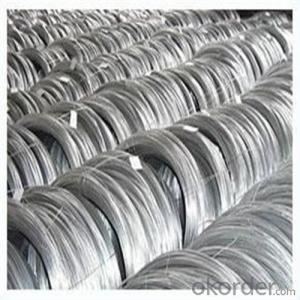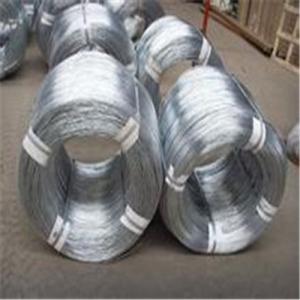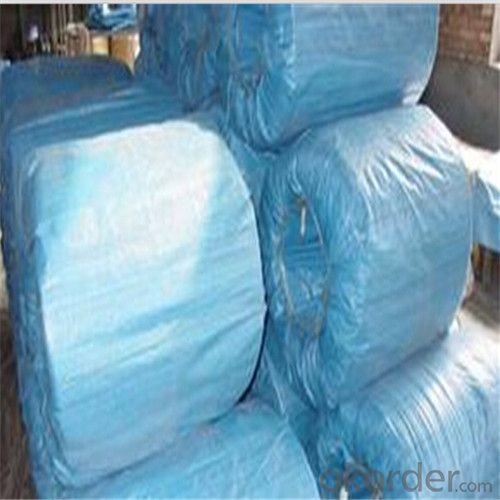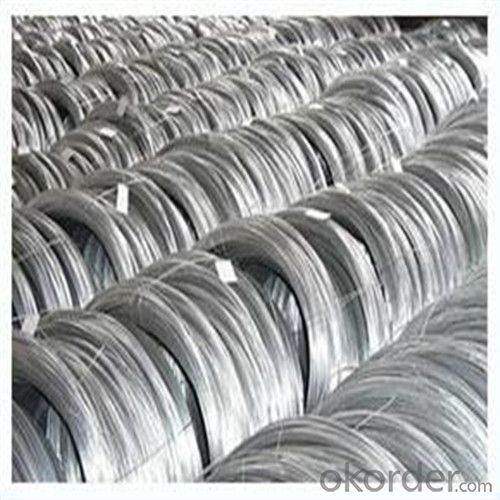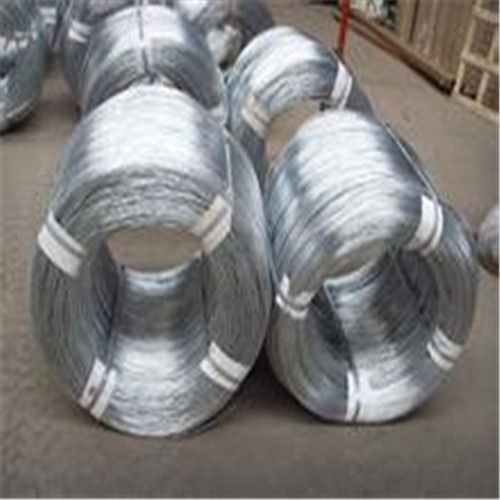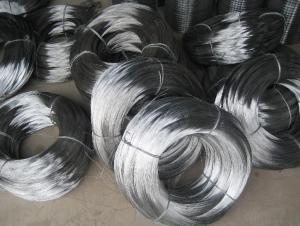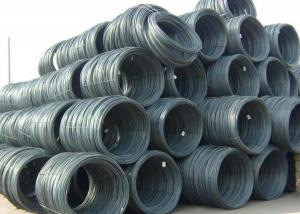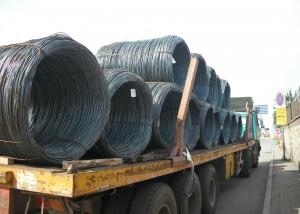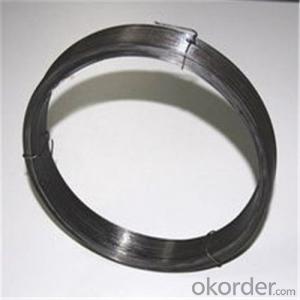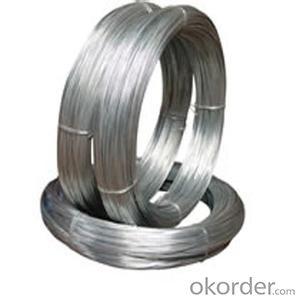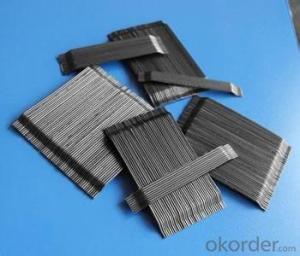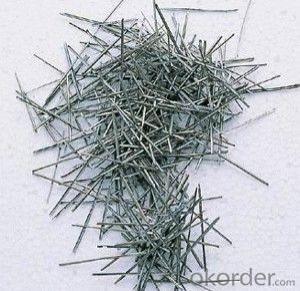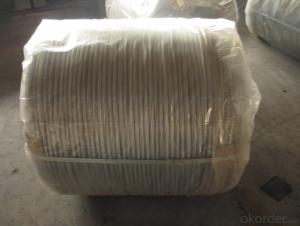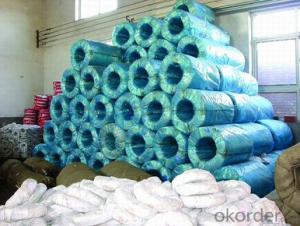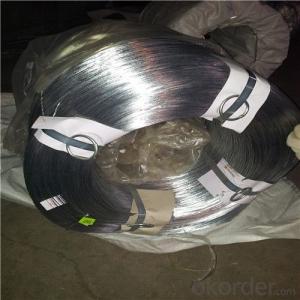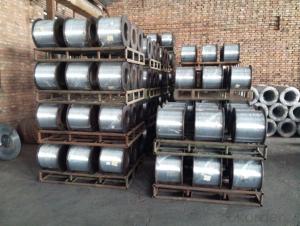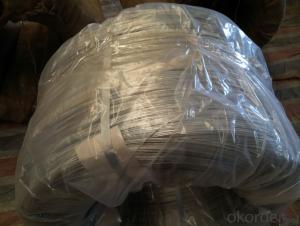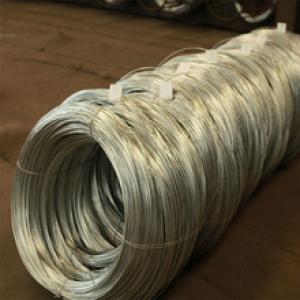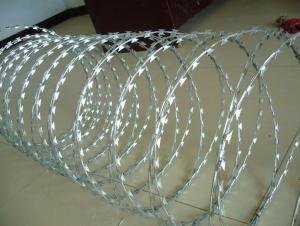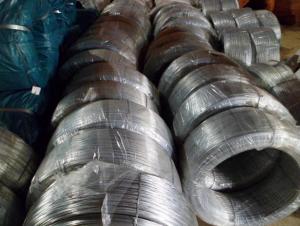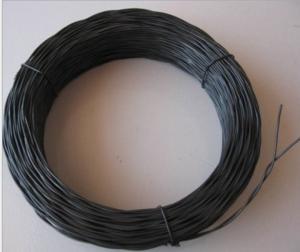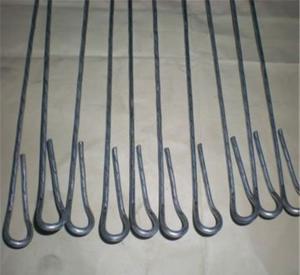Galvanised Steel Wire
- Loading Port:
- China Main Port
- Payment Terms:
- TT OR LC
- Min Order Qty:
- -
- Supply Capability:
- -
OKorder Service Pledge
OKorder Financial Service
You Might Also Like
Commercial Galvanised Steel Wire
(1) Quality : Meet GB/T 343 standard and other requirements of relevant standards .
(2) Zinc Coating: Meet GB/T 15393 standard and other requirements of relevant standards .
(3) Raw Material : Wire rod ——1006 , 1008 , 1018 , Q195 , etc, and zinc with 99.995% purity.
(4) Tensile Strength Range
Size (mm) | Tensile Strength (mpa) |
0.15-1.60 | 290-550 |
0.65-1.60 | 400-550 |
1.61-6.00 | 400-1200 |
(5) Application : Used in wire mesh , artware , metal hose , binding for agriculture and construction , etc.
(6) Packing
Size (mm) | Coil Size | Spool Packing | Big Coil Packing | |
ID (mm) | OD (mm) | |||
0.15-0.26 | 6 inch | 1-14kg/spool |
|
|
0.27-0.60 | 8 inch | 1-100kg/spool |
|
|
0.61-1.60 | 12/14/16 inch | 1-100kg/spool | 250-400 | 400-770 |
1.61-6.00 |
| 14-500kg/spool | 450 | 800 |
508 | 840 | |||
(7) Zinc Coating
Meet GB/T 15393 standard.
Size (mm) | Weight of Zinc-Coating ( g/m2 ) | |||||||
A | AB | B | C | D | E | F | ||
A1 | B2 |
|
|
|
|
|
| |
≤0.25 |
|
| 30 | 20 | 18 |
|
|
|
>0.25-0.40 |
|
|
| 30 | 25 | 20 |
|
|
>0.40-0.50 |
|
|
|
| 30 | 20 |
|
|
>0.50-0.60 |
|
|
|
| 35 | 20 |
|
|
>0.60-0.80 | 120 | 110 |
|
| 40 | 20 |
|
|
>0.80-1.00 | 150 | 130 |
|
| 45 | 25 |
|
|
>1.00-1.20 | 180 | 150 |
|
| 50 | 25 |
|
|
>1.20-1.40 | 200 | 160 |
|
| 50 | 25 |
|
|
>1.40-1.60 | 220 | 180 |
|
| 50 | 35 | 30 |
|
>1.60-1.80 | 220 | 180 |
|
| 70 | 40 | 30 |
|
>1.80-2.20 | 230 | 200 |
|
| 80 | 50 | 40 |
|
>2.20-2.50 | 240 | 210 |
|
| 80 | 55 | 40 |
|
>2.50-3.00 | 250 | 230 |
|
| 90 | 70 | 45 |
|
>3.00-4.00 | 270 | 250 |
|
| 100 | 85 | 60 | 30 |
>4.00-5.20 | 290 | 270 |
|
| 110 | 95 | 70 | 40 |
>5.20-6.00 | 290 | 270 | 245 |
| 110 | 100 | 80 | 50 |
- Q: I need a wiring guide or diagram for the stereo of a 2005 ford taurus. somethig that will show which wires are for front and rear speakers, and the remote start wire
- Hope this helps you out bro Car Radio Battery Constant 12v+ Wire: Green/Black Car Radio Accessory Switched 12v+ Wire: Black/Pink Car Radio Ground Wire: Black/Green Left Front Speaker Positive Wire (+): Orange/Green Left Front Speaker Negative Wire (-): Blue/White Right Front Speaker Positive Wire (+): Tan/Green Right Front Speaker Negative Wire (-): Green/Orange Left Rear Speaker Positive Wire (+): Gray/Blue Left Rear Speaker Negative Wire (-): Brown/Yellow Right Rear Speaker Positive Wire (+): Black/Violet Right Rear Speaker Negative Wire (-): Orange/Violet
- Q: Are two wires of the same material but different in thickness and length? Are their young's modulus of elasticity the same?
- The elastic modulus is the inherent property of the material and, once the material is determined, the modulus of elasticity has been determined, irrespective of shape
- Q: My dog chewed the wiring and i dont know how to re-connect
- Lets see, if your dog chewed the wires, he probably did it right at the valves. Here's what you do (depending on how many valves you have) 1. Each valve solenoid has 2 wires coming out of it. Grab one (of the 2- it doesn't matter which) wire from each valve and twist them together. Call this the COMMON wire (usually white). 2. Go to the clock/timer/controller and look to see where the wires are connected. Check to see which color wire is deginated as the COMMON wire (or doesn't have a station number designation) 3. Once you find out which wie is the common, go back to the valves and twist this wire onto your BUNDLE with a wire nut. 4. Connect the remaining wires at each valve to any corresponding wire (on the other end). Make sure that you eventually solidify these connections with waterproof wire connectors. 5. Check the stations at the clock, running individual stations and making sure the correct run-times correspond to the valve assignments- adjust or flip wires at the clock instead of switching wires at the valves.
- Q: I am installing an amp in my '04 Chevy crew cab truck and am running new wire for the speakers. I was able to get the fronts wired but when I broke into the back doors there is a feedthrough connector where I need to put the wires through. I am sure this connector contains the wires for my windows, door lights and the current speaker wires. My question is how do I get my new 18 gauge wires through to the speakers, am I missing something?Thanks in advance!!
- a generic AC voltmeter is designed to study 50/60 Hz Ac from the mains, no longer audio voltage, so do no longer count number on that analyzing. an ordinary element to do is in basic terms swop over factors. you have tried the audio equipment with yet another radio and that they artwork, now try yet another radio on your automobile with your audio equipment, in the event that they do no longer artwork, it leaves in basic terms the speaker wires. in the event that they do artwork, this is the radio. Oops i'm forgetting there could be a separate amp, so which you will could desire to objective yet another amp too to get rid of the defective ingredient. Do the element it somewhat is least complicated first with any success you will no longer ought to do each and every thing.
- Q: let me start off with I am not an electrician I just do basic stuff for side work I came in the project at the end. The lady wanted me to wire in 6 receptacles, a light switch and light fixture all on one circuit. everything is good except for the receptacle at the start of the circuit it has the lead/ hot coming in the power to the other receptacles going out and the power to the light going out (3 groups, 9 wires total). normally I would have used a junction box but I didn't pull the wire. How can I wire this. Would a 15 amp receptacle work?
- A 15 Amp receptacle will work, of course, but the receptacle box is most likely already overfilled. So in order to keep the wire count down, your best way to go is to buy a receptacle that uses screw down connector tabs. (NOT the kind that you have to put the wire under the screw, but the kind that you insert the wire into the back and then turn the screw down to clamp onto it!) The receptacle is a little more money but it would be worth the expense to make this hook up work. Hot wire (Black): Connect all three black wires to the back of the receptacle on the brass colored screws. Common wire (White): Connect all three white wires to the back of the receptacle on the silver colored screw. Ground: make a short pigtail of bare copper wire (about 6 or 7 inches long). Then connect the pigtail to the other 3 bare copper ground wires using a wire nut. Then connect the other end of the pigtail to the grounding connection of the receptacle. MAKE SURE THE POWER IS OFF WHEN YOU DO ALL OF THIS SO THAT YOU CAN LIVE TO TELL THE TALE! :-)
- Q: What do all the wires do
- Constant 12V+Orange Switched 12V+Yellow GroundBlack IlluminationGray DimmerBrown Antenna TriggerPink AntennaRight Rear Front Speakers5 1/4 Dash Left Front (+)Tan Left Front (-)Gray Right Front (+)Light Green Right Front (-)Dark Green Rear Speakers6 x 9 Rear Deck Left Rear (+)Brown Left Rear (-)Yellow Right Rear (+)Dark Blue Right Rear (-)Light Blue
- Q: I have an immersion heater in my hot water cylinder (UK airing cubbard), but the wiring isn't connected. But, I seem to be missing a small piece or two. The previous lead wire from the timer/switch is stil there and has two wires in it. Does someone have a generic wiring digram showing which wires connect to the thermostat and which wires connect to the heating element? Thanks!
- Immersion Heater Thermostat Wiring Diagram
- Q: Two steel wires are stretched with the same tension. The first wire has a diameter of 6.00E-4 m and the second wire has a diameter of 8.90E-4 m. If the speed of waves traveling along the first wire is 53.2 m/s, what is the speed of waves traveling along the second wire?
- Wave velocity v = √(T/μ) Same tension in both wires: T1 = T2 μ is the linear mass density v1 = 53.2 m/s v2 = ? = v1/v2 = √(T1/μ1) / √(T2/μ2) = √(T1μ2 / T2μ1) = √(T1/T2 * μ2/μ1) = √(μ2/μ1) Linear mass density is mass/length, mass is density*volume: m/L = ρV/L = ρAL/L = ρA = ρπr^2 Both wires are steel so their density is the same. == v1/v2 = √(μ2/μ1) = √(ρπr2^2 / ρπr1^2) = √(r2^2 / r1^2) = r2/r1 == v2 = v1r1/r2 = (53.2*3.00×10^-4) / 4.45×10^-4 = 35.9 m/s ---- Speed of waves along the second wire is 35.9 m/s
- Q: when u first get braces do they put the bands and the wire or just the bands cuz im getting them monday
- You get the brackets with bands and the wire. Rubber bands, though, come later.
- Q: What are some of the basic advantages of twisted pair wiring?
- Lower noise due to inductively coupled current from interference sources, such as (say) a motor or AC power line. When a changing magnetic field is near a coil of wire, it induces a current in the wire. If that wire is your network cable, the current will be misinterpreted by the receiving NIC as voltage generated by the sender, which will cause packet corruption. With twisted pair wire, after a twist the magnetic field ends up creating a current in the opposite direction since the order of the wires has switched. Therefore, the current induced from adjacent twists of the wire ends up cancelling. (Assuming the magnetic field strength is consistent over the distance of 2 twists.)
Send your message to us
Galvanised Steel Wire
- Loading Port:
- China Main Port
- Payment Terms:
- TT OR LC
- Min Order Qty:
- -
- Supply Capability:
- -
OKorder Service Pledge
OKorder Financial Service
Similar products
Hot products
Hot Searches
Related keywords

